How To Dehydrate Frozen Vegetables and Make Vegetable Powder
This post may contain affiliate links. We may earn a commission if you purchase via our links. See the disclosure page for more info.
Today, it’s all about how to dehydrate frozen vegetables and make vegetable powder. This is one of the easiest ways to get started on your journey to dehydrating your own food. When I dehydrate food, I don’t use oxygen absorbers because the food will be consumed within one year.
Then the process starts all over again.
When I was a young mother, we did a lot of water bath canning and pressure canning with all the food we could grow or purchase to help our food budget stretch for the year.
We planted just about every vegetable you could grow in the dark, rich soil.
We didn’t know anything about organic foods back then; we just planted seeds, weeded, thinned the seedlings, and watched our plants grow. Using no pesticides, we were blessed with healthy tomatoes, corn, green beans, peas, and so much more.
We had a gas-powered tiller we bought secondhand, and thankfully, it worked. It lasted many years as our family worked together to raise food for the six of us.
We grew strawberries, the biggest and juiciest we have ever eaten. We grew grapes for grape juice. It’s funny how wonderful the memories are when you work as a family to produce your own food.
We also dehydrated whatever fruits and vegetables we could grow. I lived in Logan, Utah, where I frequently visited the Utah State Extension Service.
It was vital for me to safely can for my family. I love learning, it’s my passion for sure.
Many years later, a reader told me about buying frozen vegetables when they are on sale. Why didn’t I think of that? No washing, blanching, dicing, or chopping. Open the bag of frozen vegetables, and they are ready to go.
Today, I’m going to show you how to dehydrate mixed vegetables, which can be added to many recipes, such as soups and stews.
How To Dehydrate Frozen Vegetables and Make Vegetable Powder

Kitchen Items Needed
- Cookie Sheets
- Excalibur Dehydrator or Nesco Dehydrator, or your oven
- Dicorain Food Saver
- Mason quart-size, or pint-size jars, or these jars I used today: 17-Ounce Jars with Clamp
- Magic Blender or High-Powered Blender
- Label Maker
How To Dehydrate Frozen Vegetables and Make Vegetable Powder
Step One
You start by spreading out the frozen vegetables on cookie sheets. You may see the white bath towel I have underneath the cookie sheets to let the condensation be absorbed rather than run all over the countertop.
I let them get to room temperature so the moisture would not drip inside my dehydrator.

Step Two
Spread the mixed vegetables evenly over your dehydrator racks.

Step Three
It’s great to see all these dehydrating racks ready to be used.
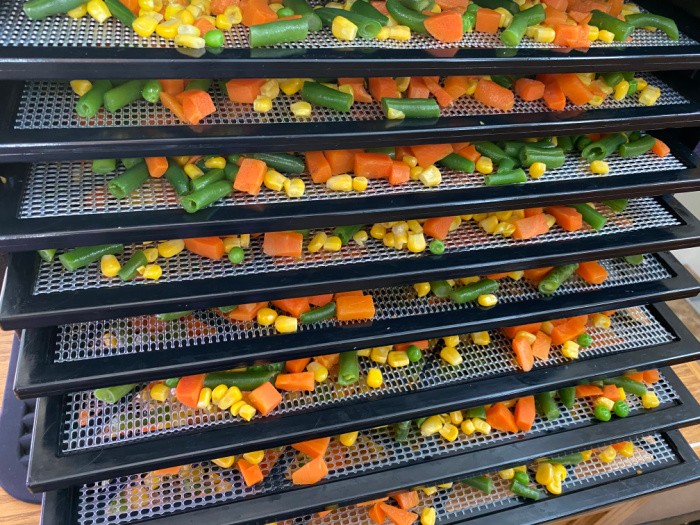
Step Four
I set my Excalibur Dehydrator at 125 degrees F. (51°C). These took about 10 hours; this time will all depend on the humidity in the room where you are dehydrating your items.
Please refer to your dehydrator booklet for the correct temperature setting. Here’s the finished product.
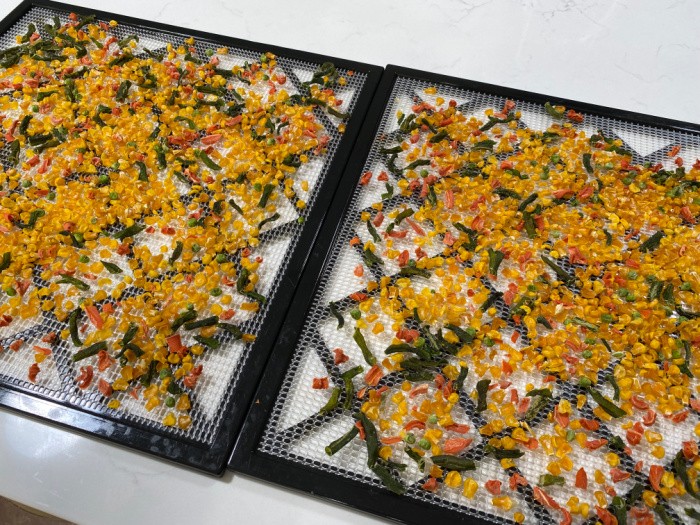
Step Five
How To Condition Your Fruit or Vegetables
If you live where it is HUMID: “To condition the fruit, take the dried fruit that has cooled and pack it loosely in plastic or glass jars. Seal the containers and let them stand for 7 to 10 days.
The drier pieces will absorb the excess moisture in some pieces. Shake the jars daily to separate the pieces and check the moisture condensation.
I used to live in the DRY DESERT: I set my fruit and vegetables on my countertop for 5-7 days. Ten days is even better to make sure everything is dry before using your FoodSaver unit.

Make Vegetable Powder
Step One
Now, we will use a high-powered blender to pulverize the dehydrated vegetables into a fine powder.
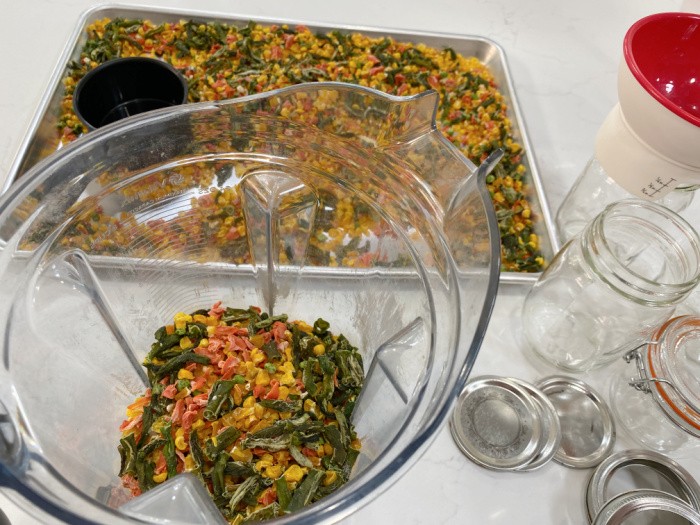
Step Two
You can see how it looks below. The powder takes up less space and is more concentrated. Sometimes people don’t like the texture of vegetables, so this is one more way to add vegetables to just about any meal without it being obvious.
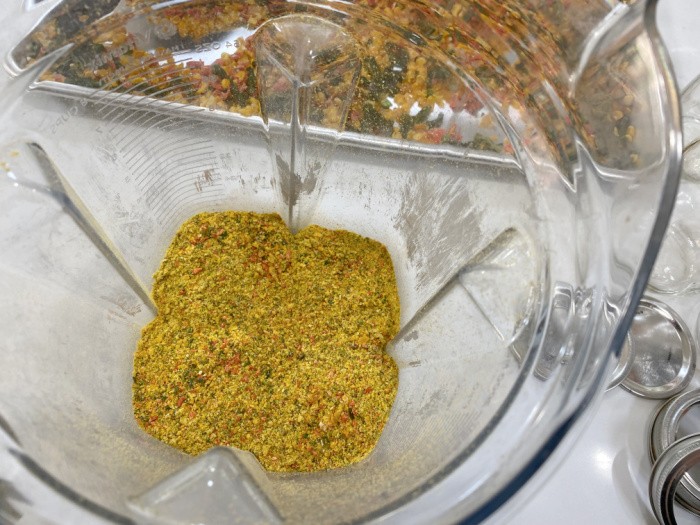
Step Three
These are the little jars I love to use; they are airtight and hold just the right amount.
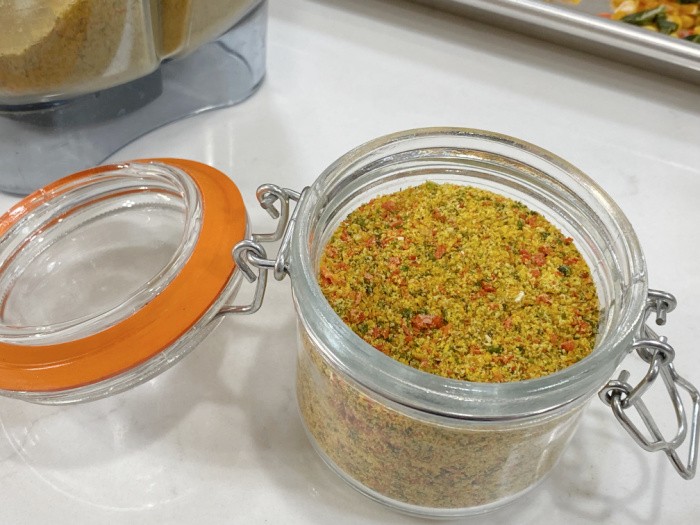
Step Four
Now you can portion out the dehydrated vegetables in mason jars or quarts. Use your FoodSaver to remove the air from your jars.
Keep the rings on these jars after dehydrating food. With wet canning, you must remove the rings after they seal to ensure they do not pop up and seal improperly.
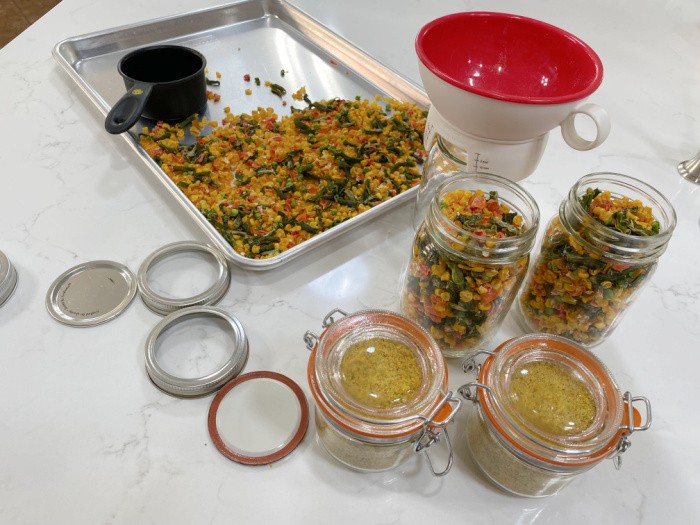
Step Five
This is another way to preserve our food and avoid using freezer space. If you want to make labels, this is what I use: Label Maker.

Can I dehydrate these in my oven?
Yes, you can. Set your oven to the lowest temperature available. Place a ball of foil to keep the oven door ajar. You will need to check them every 15 minutes or so, as they will dry very quickly.
In case you missed this post, Vegetable Powder: How To Make It and Use It
How can I use Vegetable Powder?
- Use to garnish soups and salads
- Add to dips for added flavor
- Spice up tuna and chicken salad
- Great addition to taco and potato salads
- Also great in fajitas of all kinds
- Add to smoothies
- A great addition to soups or stews
- It’s a perfect addition when cooking rice
- Sprinkle over salads
- Add a sprinkle to cooked vegetables
- Mix in with mashed potatoes
- Meatloaf
- Scrambled eggs
- Quiches
How To Dehydrate Mixed Vegetables

- Frozen Mixed Vegetables
-
I set my Excalibur Dehydrator at 125 degrees F. (51 °C).
-
You start by spreading out the frozen vegetables on cookie sheets.
-
You may want to put a bath towel underneath the cookie sheets to let the condensation be absorbed rather than run all over the countertop.
-
When thawed, spread the mixed vegetables evenly over your dehydrator racks.
-
I let them get to room temperature so the moisture would not drip inside my dehydrator.
-
These took about 10 hours; this time will all depend on the humidity in the room where you are dehydrating your items.
-
Please take a look at your dehydrator booklet for the correct temperature setting.
-
Store your fully dehydrated and conditioned fruits and vegetables in mason jars and use your favorite FoodSaver to remove the air from the jars. Keep the rings on the jars to store them.
-
If you live where it is HUMID: “To condition the fruit, take the dried fruit that has cooled and pack it loosely in plastic or glass jars. Seal the containers and let them stand for 7 to 10 days.
-
The drier pieces will absorb the excess moisture in some pieces. Shake the jars daily to separate the pieces and check the moisture condensation.
-
I used to live in the DRY DESERT: I set my fruit and vegetables on my countertop for 5-7 days. Ten days is even better to make sure everything is dry before using your FoodSaver unit.
-
Now, you can use a high-powered blender to pulverize the dehydrated vegetables to make a vegetable powder, if you'd like. It's more concentrated, so you will use less when cooking with it.
-
Use airtight jars to store the vegetable powder.
Final
When you start your dehydrating journey, if you haven’t already, this is the easiest way to dehydrate frozen vegetables. It’s all about storing food for the year in your pantry.
No freezer is needed, it takes up very little space, and we can eat healthy vegetables. Please keep prepping, we must. May God bless this world, Linda
Here are the other Dehydrating Posts I have done:
- Dehydrating Green Onions and Powder
- Dehydrating Mushrooms and Mushroom Powder
- Dehydrating Tomatoes and Powder



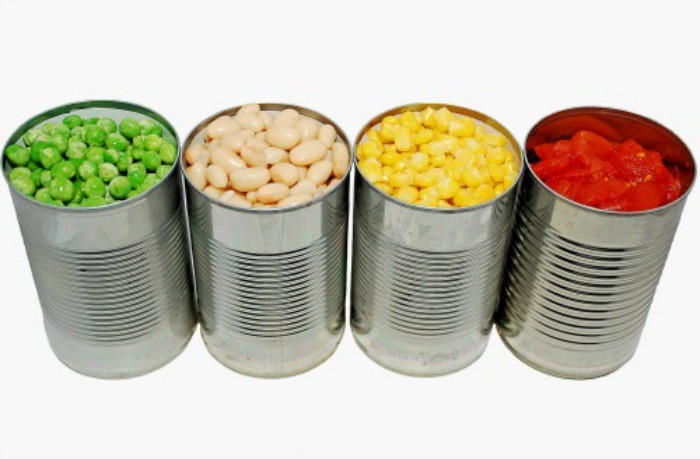
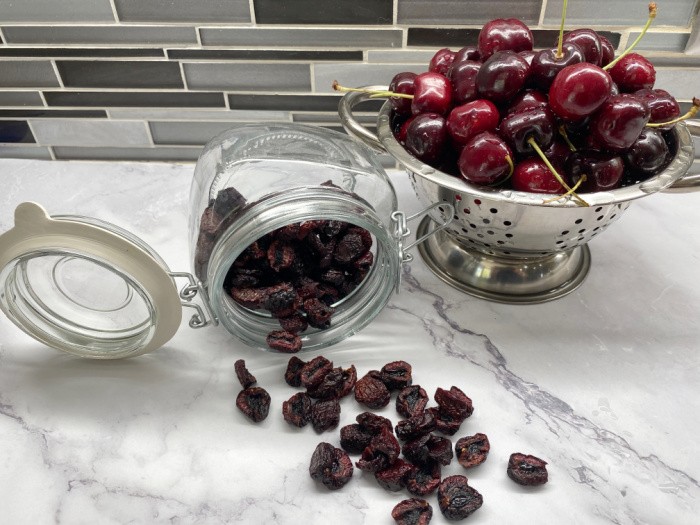


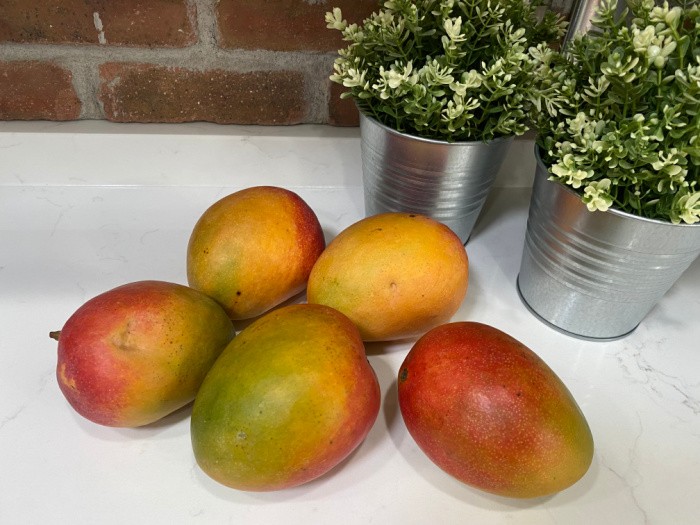
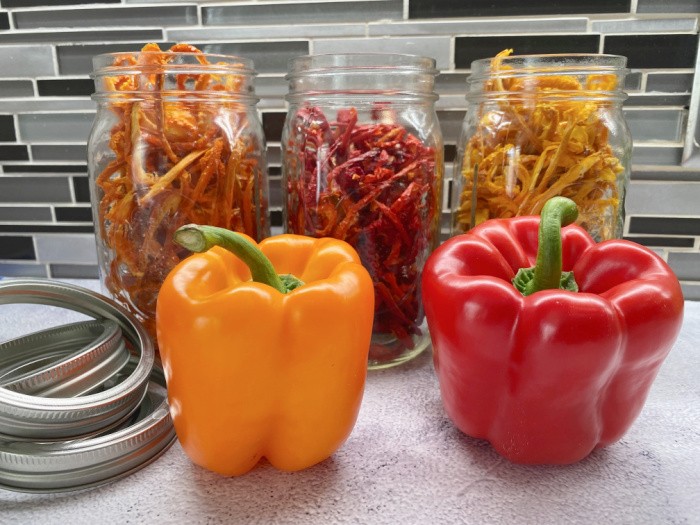

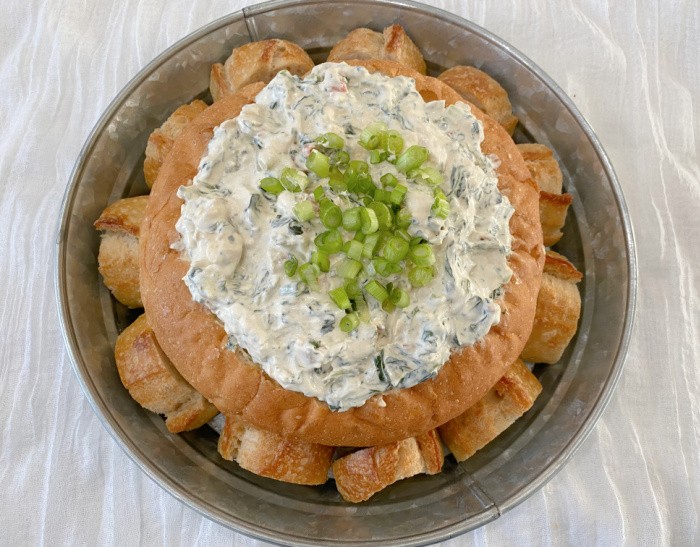
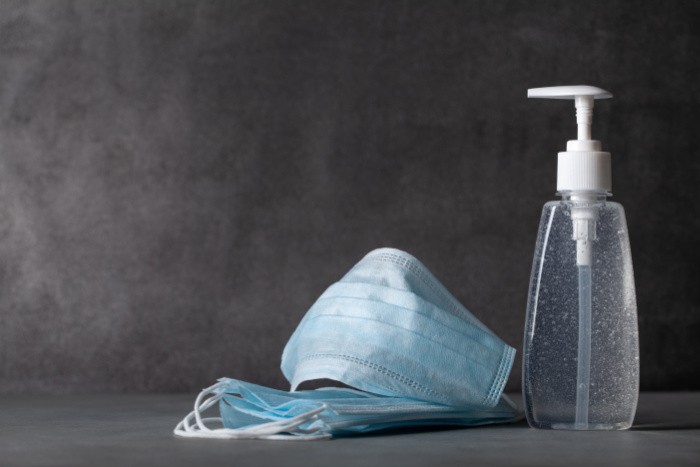

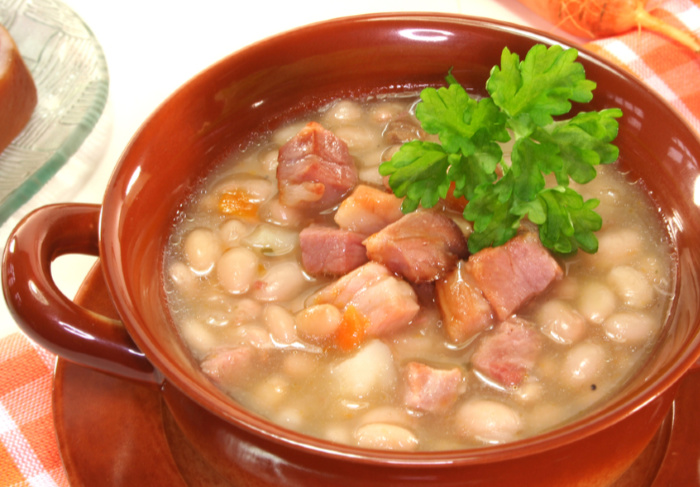
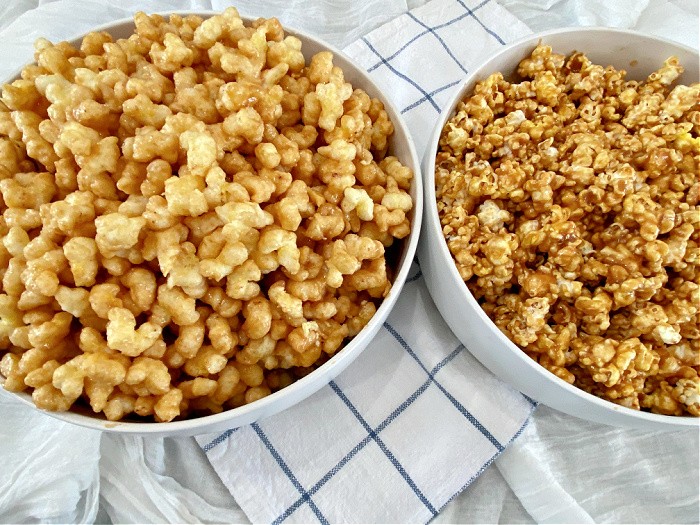

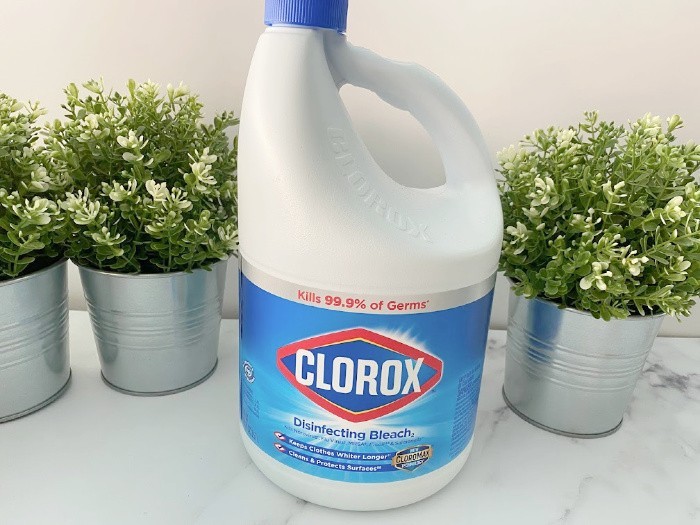
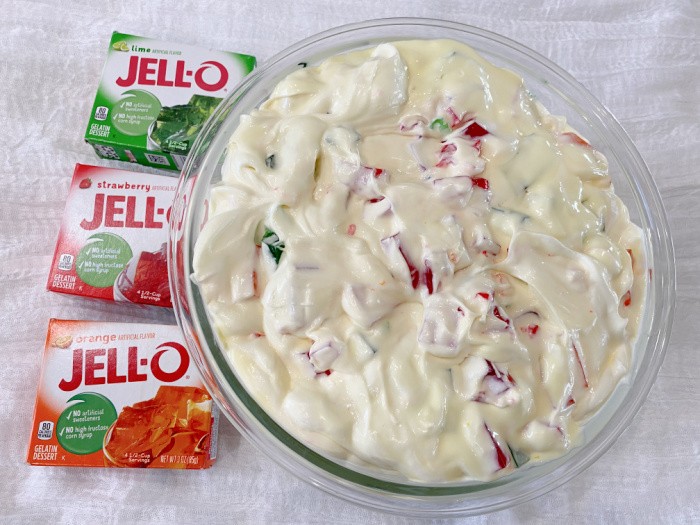
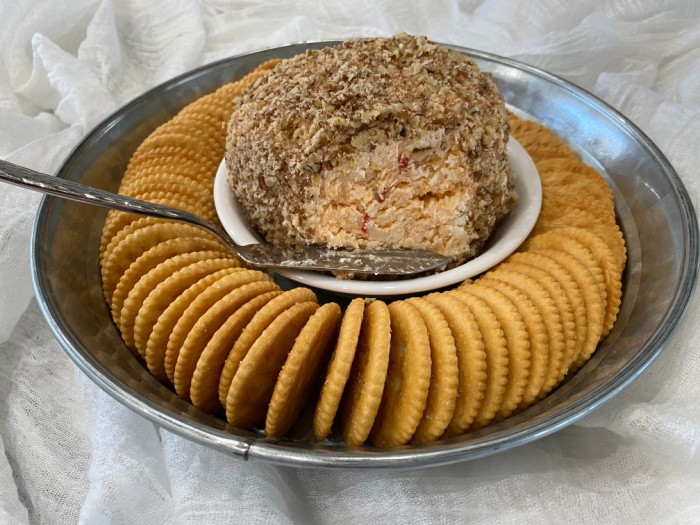
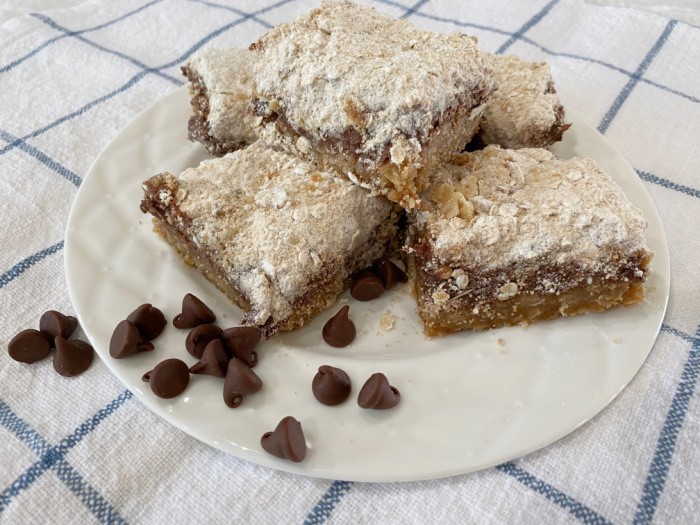

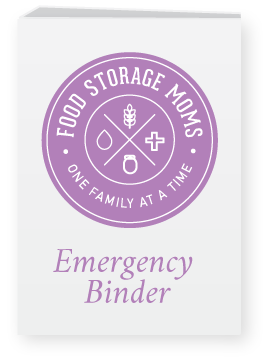
I’ve dehydrated frozen vegetables. Our local grocery store had frozen vegetables on sale for $1 for 12 ozs. They turned out great! I even dehydrated frozen sliced okra. I read that you can rehydrate and batter and fry them. Can’t wait to try it. We love fried okra. This is a great way to stock food.
I’ve sliced the okra and put little bit of olive oil on it in baggie and salt and pepper and cornmeal tossed it around in baggie and then dried it. Tasted like fried okra and a wonderful crunch less calories this way too
Hi EMS, thank you for the 5 stars! I need to try this okra recipe!! Thank you! Linda
What would you use the vegetable powder in?
I’ve not heard of this before, so forgive me.
Thank you
Lisa
Hi Liss, thank you for bringing this to my attention. I added some things to the post about how to use vegetable powder. You can use it in scrambled eggs, quiches, soups, rice, etc. Here is a link you may want to look at. https://www.foodstoragemoms.com/vegetable-powder/ Thank you for the 5 stars, you are so kind! Linda
Thank you so much!!!!
Hi Liss, you are so welcome!! Linda
Good morning, Linda. I only have a very good toaster oven. Approximately how long would it take to dehydrate things? It also has a fan that can be turned on (convection). Thanks.
Hi Pam, that’s a great question. I wrote this, set your oven to the lowest temperature available. Place a ball of foil to keep the oven door ajar. You will need to check them every 15 minutes or so because they will dry very fast. Your toaster oven with convection is awesome, it blows the air around. I have no idea how long it would take to dehydrate things in a toaster oven. If you use a dehydrator, it’s a guessing game as well. I set the timer, and adjust it as needed. It will depend on the humidity in the room as well. It will dehydrate very quickly in a regular oven. So I’m assuming it would dehydrate faster in your toaster oven as well. I hope this helps, Linda
Linda, thanks. I’ll try it and see what happens, lol. I’ll get a small bag of mixed veggies and see what happens. I have low humidity here like you do so hoping this will work and then I can try other things. Pam.
Hi Pam, it’s worth a try. Linda
Hi Linda, I have been making what I call “my health powder” for a good 28 or more years. It dawned on me it would be a way to get very much more veggies into my body. I grow a large garden with nearly every vegetable that grows and dry much of it. However, I thought it would be even better by adding assorted canned beans which are drained and rinsed before drying them and adding to the powder. Then, I thought, mushrooms are really good for the body. I ordered a mixture of 5 different freeze dried mushrooms and powdered them into the mix. The way I figure it is if the SHTF ever happens I could easily survive on this powder and water. I Have friends who have taken up my practice. They are no longer sick with flu and colds. I never get sick and I am uh an elder. Let’s leave it at that shall we? I powder it by using a processor first then I use my smoothie maker as it turns the rough stuff into a powder that you can sprinle easily. I did want to say I sprinkle the powder in and on everything I bake, roast, cereal, smoothies, meat loaf, salads, eggs and well, just everything. I aim for over a gallon a year of this powder. I hope your readers will make this powder as you suggest but go even farther with it as I suggest. Happy gardening everyone.
Hi Diane, I LOVE LOVE LOVE your comment! I love the idea of “my health powder”!!!!! I hope everyone follows your guidance on this! Oh my gosh, you are awesome for sharing! Thank you!! Linda
No my dear Linda. Tis you who are awesome for helping all the people within have a better quality of life. You may pat yourself on the back as I am doing for you. Keep up the good work. ❣
Hi Diane, thank you for the 5 stars, we will all be healthier now!! Thank you for your kind words! Linda
Hi Linda:
Sorry if I sound funny as I write this my mind is somewhere else right now. I have never thought to dry out the veggies and make them into a powder. I bet I could grind them up in my blender couldn’t I? It would be great to have the dried veggies to use in soups and stews in winter. What a wonderful idea
Jackie
Hi Jackie, I love your comments, it’s all good, my friend. Yes, I use my blender to pulverize them. Start with a little, it goes a long way because it’s concentrated. Linda
Hi Jackie, I forgot to thank you for the 5 stars, my friend!! Hugs, Linda
Linda ~
I have been dehydrating frozen fruits and veggies for years. So much easier than having to chop, cook if needed in the case of carrots, potatoes, etc., – you know, the hard veggies; then dehydrate. I try my best to get organic, non-gmo frozen fruits and veggies but that is not always possible at the stores I shop at or my wallet!!
I am watching the sale adds to find the best prices for frozen produce.
Hi Leanne, I agree with you on organic and non-GMO food, better safe than sorry down the road. No waste, no work, it’s so easy to dehydrate them!! Linda
Wow, Linda!
I am excited to do this with the frozen vegetables. I have not heard of that before. And vegetable powder! Woohoo!
I love dehydrating!
Hugs my friend,
Jackie Perkins
Hi Jackie, thank you for the 5 stars, my friend!! Oh, I love hearing you love dehydrating!! Hug backs to you!! Linda
Hi Linda, great idea! However just wondering if you could do this with canned vegetables? Rinsing them first or not? Thanks for the help! Jeanne
Hi Jeanne, thank you for the 5 stars!! I have dehydrated canned pineapple, I just drained the juice. I would just drain them unless you think they have a lot of sodium added. Either way, they would work. Now, I need to try dehydrating some, great idea!! I love it! Linda
I love your website, Linda. In my past, I’ve had an Excalibur dehydrator, but I sold it a long time ago when I stopped doing that. I was a prepper for awhile too, but to me it was hard to keep up with the constant rotation to keep products fresh & new. But, now I’m back to prepping again thanks to this country going down the tubes rapidly. I’ve been looking at buying some dehydrated products, but your method would work for me too. I would have to use my oven. I have a Vitamix high speed blender. I understand what you wrote, but my problem is that I don’t own a Food Saver, so how does one get the air out of the jars before closing them up?
Hi Janet, I saw someone with a hand deal that removed the air from jars. I will see if I can find it again. I agree with you on our country going down the tubes. The Vitamix works great for powder and those little jars are airtight so no FoodSaver for the powder jars. Let me do some checking for a hand sealer. Linda
Thank you, thank you.
Hi Janet, thank you for the 5 stars!! You are so welcome! Linda
Hi Linda. I was wondering if you’ve had a chance to check on info about the hand sealers? A friend of mine said I could borrow one of her three Excalibur dehydrators, when I told her about this website. But, I still have the problem of the finished product being air sealed with no Food Saver. Help!
Hi Janet, the hand sealers? You mean for FoodSavers. We will have to see which handheld sealer works with your FoodSaver. Or are you talking about a Hand-Held Sealer to do bags and jars? I see some that will do bags but not ALL mason jars. Linda
Hi Linda. Thanks for your reply, but I think you misunderstand. Please refer to my original post on this subject from Sept 16 at 3:13 PM & your reply on Sept 16 at 6:09 PM.
Hi Janet, I am going to check with FoodSaver. I saw a handheld one but the description says it does “their” containers but not mason jars. It’s confusing because some of them have a white “plug” and some have a “green plug” which means they go to different FoodSaver Units. I thought I saw one on Amazon but it says they do not do mason jars. That’s this one: https://amzn.to/3zTHWwm I will try and call them tomorrow. Linda
Hi, Linda!
A couple of years ago I dehydrated my home-grown tomatoes…some went into jars with olive oil (“sun-dried tomatoes”) and others I ground up in an old coffee bean grinder then put in a small jar.
However, I never thought to use FROZEN veggies in the process! And I love the idea of making my own “power powder” as Diane is doing.
Soup and bread or one pot meals that can be later turned into something else is the way I’m cooking these days, but adding those extra hidden veggies will be a great boost for all at my table. Love you, Gal! And so happy for your move closer to family.
Shirley, from S. Oregon
Class of ’68
\
Hi Shirley, I’m from the class of ’68 Las Vegas, Nevada!! Squeal! I like your idea of a coffee grinder to make the powder!! LOVE IT! It’s great to make our own power powder as Diane said! Adding extra veggies is awesome!! Love you too, Linda
Thank you.
Hi Janet, I wish I had a store here to help me “see” the difference between the different attachments. I’m packing like crazy to be moved in 2 weeks. I will do what I can. Linda
Linda,
What do you think the shelf life is for the dehydrated mixed veggies and the veggie powder?
Thanks for all your ideas and willingness to share your knowledge!
Hi Della, thank you for the 5 stars, my sweet friend! My husband and I took classes for our Master Canning and Preserving certificates. We had been canning for over 50 years and dehydrating as well. But I knew the food we are processing has changed over the years. So we took the class and this is what I learned. The idea behind canning and dehydrating is to preserve enough food for one year. Safely for one year. I have eaten peaches I canned that were 4 years old, just FYI. We were taught one year for the items we can, pressure can and dehydrate. It makes sense, preserve for a year and start new the next year. I have some dehydrated veggies that are 2 years old and they are not as good as they were the first year. Are they safe? I think so but possibly the vitamins have gone down a bit. I would go with your gut, when in doubt throw them out. Linda
Doesn’t vacuum sealing help with preserving the vitamins? Just wondering. Also, now they have battery operated jar vacuum sealers. Check on Amazon.com. I have one and love it!
HI Deborah, thank you for the 5 stars, my sweet friend. Yes, I have the Dicorain, you can charge it and it lasts a long time. Yes, it helps with preserving the vitamins. I will look for a battery one as well, good to know. Thank you, Linda
The Dicorain is the one I was talking about. It does have rechargeable batteries inside. I’ve only had to charge mine twice. I’ve had it almost a year. When I use it, it vacuum seal a lot of jars. LOL
Hi Deborah, oh yeah, that is the best invention ever! You can do so many without having to recharge it for many jars!! LOL! Great minds think alike! Linda
Thank you Linda, Everyday you teach me something new.
Hi Chris, thank you for the 5 stars, my sweet friend! You are always so kind! Linda